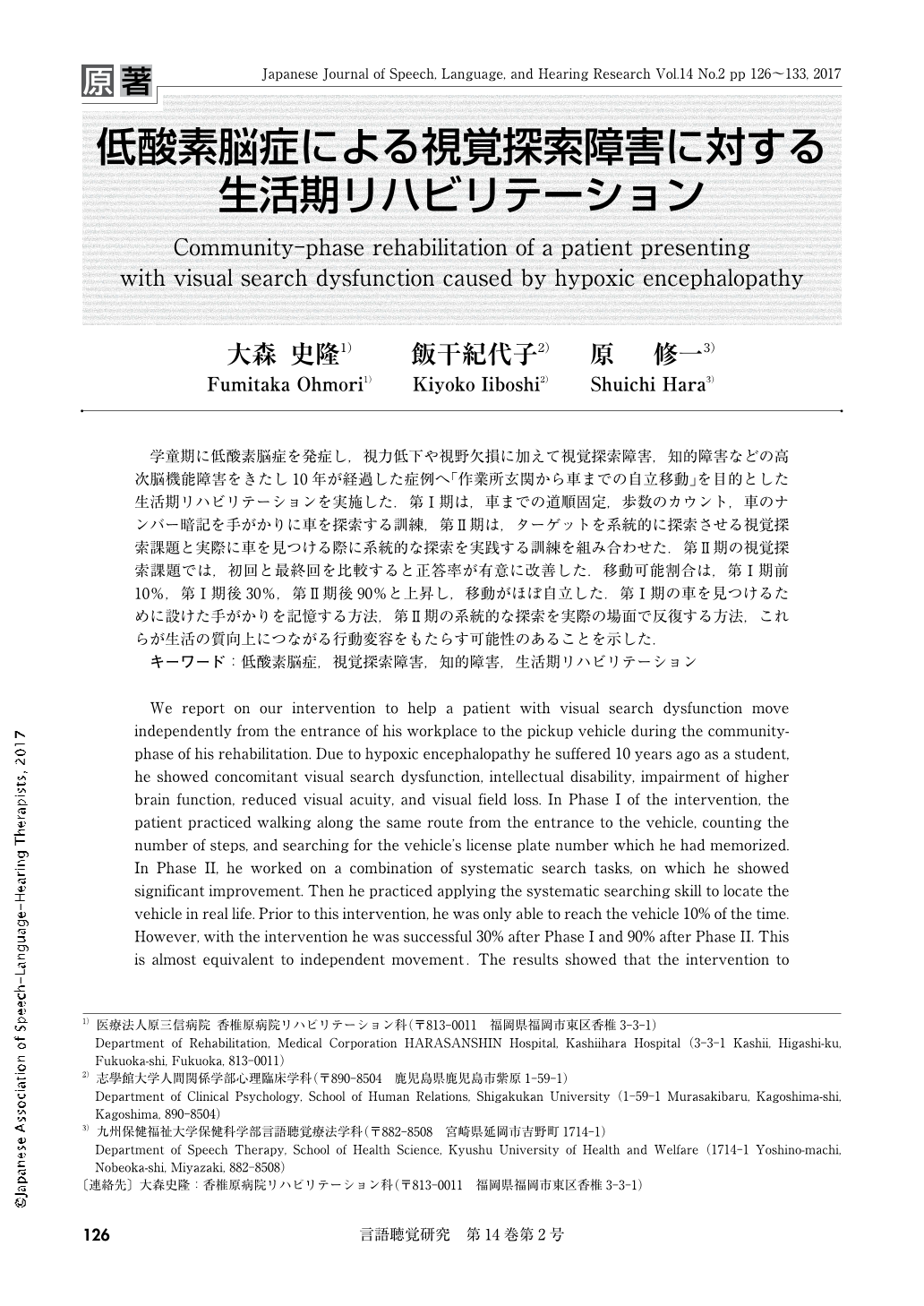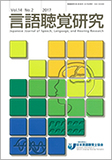Japanese
English
- 有料閲覧
- Abstract 文献概要
- 1ページ目 Look Inside
- 参考文献 Reference
学童期に低酸素脳症を発症し,視力低下や視野欠損に加えて視覚探索障害,知的障害などの高次脳機能障害をきたし10年が経過した症例へ「作業所玄関から車までの自立移動」を目的とした生活期リハビリテーションを実施した.第Ⅰ期は,車までの道順固定,歩数のカウント,車のナンバー暗記を手がかりに車を探索する訓練,第Ⅱ期は,ターゲットを系統的に探索させる視覚探索課題と実際に車を見つける際に系統的な探索を実践する訓練を組み合わせた.第Ⅱ期の視覚探索課題では,初回と最終回を比較すると正答率が有意に改善した.移動可能割合は,第Ⅰ期前10%,第Ⅰ期後30%,第Ⅱ期後90%と上昇し,移動がほぼ自立した.第Ⅰ期の車を見つけるために設けた手がかりを記憶する方法,第Ⅱ期の系統的な探索を実際の場面で反復する方法,これらが生活の質向上につながる行動変容をもたらす可能性のあることを示した.
We report on our intervention to help a patient with visual search dysfunction move independently from the entrance of his workplace to the pickup vehicle during the community-phase of his rehabilitation. Due to hypoxic encephalopathy he suffered 10 years ago as a student, he showed concomitant visual search dysfunction, intellectual disability, impairment of higher brain function, reduced visual acuity, and visual field loss. In Phase I of the intervention, the patient practiced walking along the same route from the entrance to the vehicle, counting the number of steps, and searching for the vehicle's license plate number which he had memorized. In Phase II, he worked on a combination of systematic search tasks, on which he showed significant improvement. Then he practiced applying the systematic searching skill to locate the vehicle in real life. Prior to this intervention, he was only able to reach the vehicle 10% of the time. However, with the intervention he was successful 30% after Phase I and 90% after Phase II. This is almost equivalent to independent movement. The results showed that the intervention to learn useful cues in Phase I and to practice applying them in real life in Phase II brought about behavior modifications that led to some improvement in quality of life.

Copyright © 2017, Japanese Association of Speech-Language-Hearing Therapists. All rights reserved.


